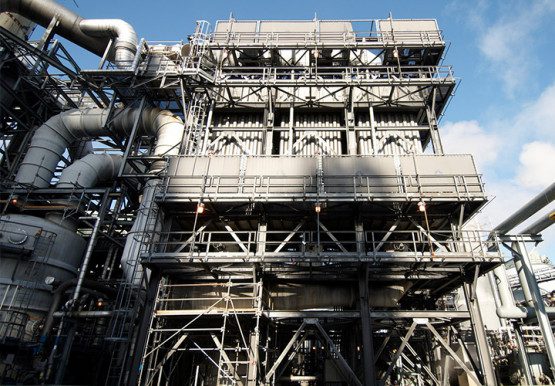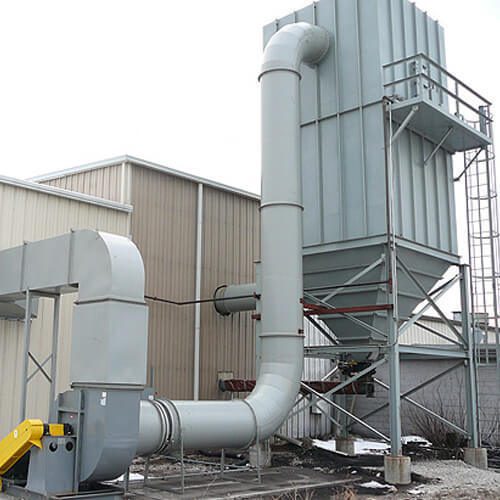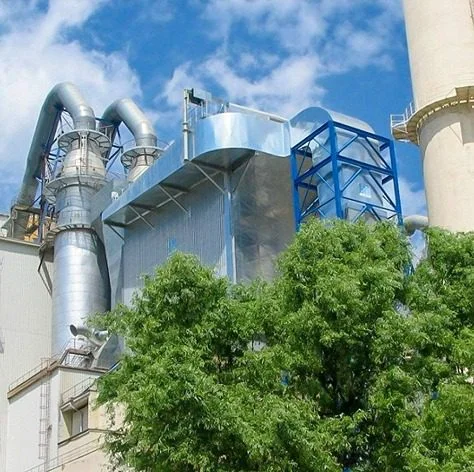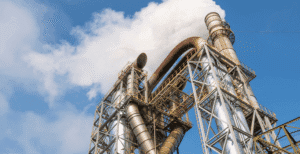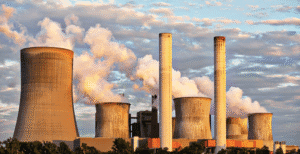The electrostatic precipitator process plays a pivotal role in industrial air pollution control systems. It is designed to significantly reduce particulate emissions from industrial exhaust streams, making it essential for facilities aiming to comply with environmental regulations, protect sensitive equipment, and ensure the safety and well-being of workers. As industrial operations generate massive amounts of airborne particles—ranging from fine dust to smoke and fumes—there is a critical need for reliable filtration technology that performs at scale without compromising efficiency.
Intensiv Filter Himenviro, a leading name in dust collection and gas cleaning solutions, specializes in designing and delivering advanced electrostatic precipitator systems. These systems are tailored to meet the unique challenges of various industries, including cement production, thermal power generation, metal processing, pharmaceuticals, and chemical manufacturing. Each ESP is engineered for high-efficiency dust removal, long operational life, and low maintenance requirements, helping clients across sectors minimize their environmental footprint.
In this comprehensive article, we delve into the electrostatic precipitator process—exploring its working principle, core components, system configurations, and its growing importance in industrial pollution control. Whether you are a plant manager, environmental engineer, or operations decision-maker, understanding this process is key to making informed choices about emission control solutions.
What Is an Electrostatic Precipitator?
An electrostatic precipitator (ESP) is a sophisticated filtration device designed to remove fine particles—such as dust, smoke, and mist—from a flowing gas stream. It functions by applying an electrostatic charge to airborne particles and collecting them on oppositely charged surfaces. This technique enables the collection of particles that are often too small for traditional mechanical filters to capture.
Unlike fabric filters or cyclone separators, ESPs use electrical forces rather than physical barriers to separate particulate matter from exhaust gases. The result is an exceptionally efficient process that can achieve collection efficiencies of over 99%, even with extremely fine particles (as small as 0.1 microns in diameter). This makes electrostatic precipitators one of the most preferred dust collection technologies in high-volume, heavy-duty industrial applications.
The operation of an ESP does not significantly impede gas flow, making it an energy-efficient choice for large-scale operations. It also functions well under high-temperature conditions and in processes where the nature of dust or particulate matter may vary widely.
By leveraging the power of electrostatics, this technology not only ensures compliance with stringent emission norms but also enhances the overall air quality inside and outside industrial premises. For industries committed to sustainable practices and cleaner operations, investing in a well-designed electrostatic precipitator system is both a regulatory necessity and a strategic advantage.
Yechimlarimiz qatorini kashf eting:
How the Electrostatic Precipitator Process Works
The electrostatic precipitator process operates based on the principle of electrostatic attraction. Here’s a breakdown of how the process works:
1. Gas Stream Entry
Dirty flue gas enters the ESP chamber through an inlet. The gas typically contains suspended particles such as ash, dust, and other particulates generated during combustion or production processes.
2. Charging Section
As the gas flows into the charging section, it passes through a region with discharge electrodes. These electrodes are supplied with high-voltage direct current (DC), usually in the range of 30,000 to 100,000 volts. The high-voltage current ionizes the gas molecules, which then collide with the dust particles and impart a negative or positive electric charge to them.
3. Migration to Collection Plates
The charged dust particles are attracted to oppositely charged collection plates or tubes located in the ESP. As these particles come into contact with the plates, they stick to the surface, forming a dust layer.
4. Particle Removal
To prevent the dust from building up and reducing the effectiveness of the ESP, mechanical rapping systems periodically shake or vibrate the collection plates. This dislodges the dust, which then falls into hoppers located at the bottom of the system for disposal or recycling.
5. Clean Gas Exit
The cleaned gas, now free of dust and particulate matter, exits the ESP through the outlet and is safely released into the atmosphere or directed toward further treatment.
Key Components of an Electrostatic Precipitator
The performance and efficiency of the electrostatic precipitator process depend on several crucial components:
Discharge Electrodes – Provide high-voltage corona discharge to ionize the gas stream.
Collection Electrodes (Plates or Tubes) – Attract and hold the charged dust particles.
Rapping System – Periodically dislodges accumulated dust from collection surfaces.
Insulators – Electrically isolate the high-voltage system from the grounded casing.
Hoppers – Collect and store dislodged dust for removal.
Power Supply Unit – Generates and maintains the required high voltage for discharge electrodes.
Gas Distribution Screens – Ensure uniform gas flow through the ESP chamber.
Elektrostatik cho'ktirgichlarning turlari
Electrostatic precipitators are not one-size-fits-all systems. Their design and construction are often tailored to meet the specific needs of different industrial processes, types of particulate matter, and operational conditions. Over the years, several types of ESPs have been developed, each optimized for unique dust characteristics, gas flows, and environmental factors.
Below are the three most widely used types of electrostatic precipitators:
1. Plate-Type Electrostatic Precipitator
The plate-type ESP is the most commonly deployed version across industries. It features parallel flat plates that serve as the collection surfaces, with discharge electrodes (usually thin wires) suspended between them. As the dust-laden gas flows through the chamber, the particles are charged and driven toward the grounded collection plates, where they accumulate and are later removed by mechanical rapping.
This type of ESP is ideal for high-volume applications such as those in thermal power plants, cement kilns, and steel mills, where consistent airflow and large particulate loads are common. The modular nature of the plate-type design allows for scalability and easy integration into existing systems.
2. Tubular Electrostatic Precipitator
The tubular ESP uses cylindrical collection electrodes instead of flat plates. A central wire electrode runs along the axis of the tube, creating an electric field that charges the incoming particles. The charged particles migrate to the inner wall of the cylinder, where they are collected.
This configuration is especially suited for handling low-flow gas volumes, high-resistance dust, or sticky vapors, such as oil mists, tar particles, or condensed hydrocarbons. Tubular ESPs are commonly found in petrochemical plants, asphalt production facilities, and applications with high corrosion or condensate risks.
3. Wet Electrostatic Precipitator (Wet ESP)
Unlike dry ESPs, the wet electrostatic precipitator is designed to handle moisture-laden or sticky particulates that may not be easily removed by mechanical means. In a wet ESP, water is continuously sprayed onto the collection surface to wash away the captured particulates. This prevents re-entrainment and ensures a clean collection surface is maintained throughout operation.
Wet ESPs are typically used in processes involving acid mists, sulfuric acid vapors, tar fogs, or sticky chemical emissions. They are frequently installed in chemical plants, gas cleaning systems, waste incinerators, and scrubber systems as a final filtration stage.
Hozir biz bilan bog'laning
Advantages of the Electrostatic Precipitator Process
High Efficiency – It is Capable of removing over 99% of particulate matter.
Handles Large Gas Volumes – Suitable for high-flow operations like cement kilns and boilers.
- Low Operating Cost – After installation, ESPs have relatively low energy consumption and maintenance requirements.
Long Service Life – Engineered to operate for decades with proper maintenance.
Effective for Fine Particles – Captures particles as small as 0.1 microns.
Environmentally Compliant – Helps industries meet air pollution control regulations effectively.
Sanoat bo'ylab ilovalar
Electrostatic precipitators are widely used in industries where fine particulate emissions are generated:
Cement Industry – For dust removal from rotary kiln exhaust gases.
Power Plants – To remove fly ash from flue gases produced during coal combustion.
Metallurgical Plants – Captures metal oxide particulates from smelting operations.
Chemical Industry – Controls the emission of dust and mist from chemical reactors.
Pulp and Paper Industry – Removes pollutants from recovery boilers.
Pharmaceutical Manufacturing – Prevents fine powder dispersion into clean areas.
Operational Factors Affecting ESP Efficiency
To ensure optimal performance of the electrostatic precipitator process, several operating parameters must be considered:
Gas Temperature – Must be controlled to prevent condensation and corrosion.
Particle Resistivity – Affects how well particles stick to collection plates.
Gas Flow Rate – Needs to be uniform to ensure complete exposure to electrodes.
Voltage and Current Levels – Directly influence ionization and particle migration rates.
Maintenance Schedule – Regular inspection and rapping are crucial to efficiency.
Innovations from Intensiv Filter Himenviro
Intensiv Filter Himenviro offers advanced ESP systems equipped with modern automation and control features, including:
Real-Time Monitoring – Tracks system performance and alerts for maintenance needs.
Energy-Efficient Power Supplies – Optimize voltage delivery while conserving power.
Modular Designs – Allow easy customization for specific industry needs.
Retrofitting Solutions – Upgrade older systems with modern controls and improved efficiency.
Our engineering teams work closely with clients to design solutions that align with process parameters, emission norms, and space constraints, ensuring maximum filtration with minimal footprint.
Maintenance and Safety
While ESPs require less manual intervention than many other filtration systems, routine maintenance is vital to ensure consistent performance:
Inspection of Discharge Electrodes – Check for wear or corrosion.
Cleaning Insulators – Prevent tracking and short-circuits.
Rapper System Checks – Ensure all mechanical parts are functional.
Dust Hopper Management – Regular removal to prevent build-up.
High Voltage Safety – All electrical components must be serviced with strict adherence to safety protocols.
Environmental and Regulatory Compliance
The electrostatic precipitator process is a key component in helping industries meet stringent environmental regulations on emissions. By reducing particulate pollution to minimal levels, ESPs play a crucial role in:
Improving workplace air quality
Protecting community health
Avoiding regulatory fines and shutdowns
Achieving sustainability goals
Xulosa
The electrostatic precipitator process is a proven, efficient, and essential method for industrial dust collection. With its high filtration efficiency, low operational cost, and versatility across industries, ESP technology continues to be a cornerstone of clean air initiatives. At Intensiv Filter Himenviro, we bring decades of expertise in designing and delivering advanced electrostatic precipitator systems tailored to the needs of each application.
Whether you’re operating a cement plant, power station, or chemical facility, our solutions ensure that dust stays out of the air and off your compliance radar.
